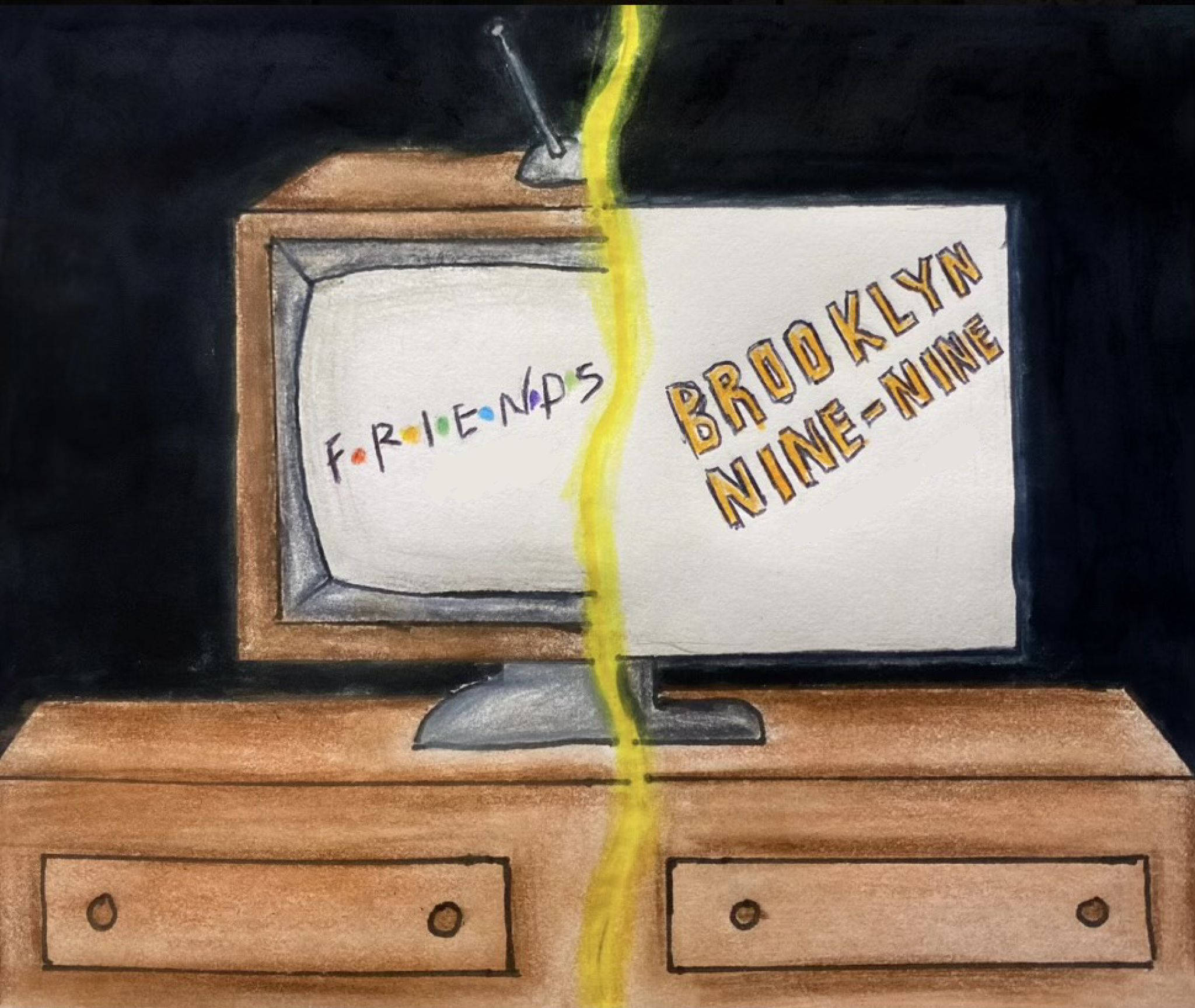In light of “Friends” TV show star Matthew Perry’s death, news outlets, magazines, and even podcasts have been looking back on the golden age of television, asking if it’s come to an end or entered a new and more diverse era. With almost any show being streamable at the click of a button, it’s not as easy as it once was for old television shows to get lost and forgotten with time. What does this mean now for the legacy of these shows?
As students navigate growing up, and working through the stress of high school, it’s common to find comfort in familiar characters and cheesy laugh tracks, which is why so many high school students often find themselves rewatching these timeless classics.
“In many ways, it can provide a sense of comfort for people … just something to rely on because it’s always there,” said Eden Ross, a Berkeley High School student, reflecting on the comfort of American Sitcoms. The characters are relatable, and each episode adds a new and interesting aspect to them as people. It’s easy to find yourself in an almost parasocial relationship with those characters, after continuously watching the show.
“There are stereotypical character tropes in sitcoms. There’s the goofy one, and the one that’s really smart and responsible” said Bella Robinson, a BHS senior. There is nothing wrong with studying like Rory Gilmore, or cleaning like Monica Geller when you need inspiration. The problems arise when the so-called “inspirational and relatable” characters cause people to try and conform to inhuman character tropes that are hardly realistic.
Sitcoms have a large and important cultural impact on this country, particularly on the high school age group, but they have also for a long time perpetuated unhealthy standards and ignorant thinking onto viewers.
“There’s never enough representation, and we need a lot, because there’s not a single story to anything,” said Keldon Clegg, a BHS humanities teacher, expanding on the diversity of modern versus older sitcoms.
Most older sitcoms feature a lack of diversity in their casts. This does not negate the existence of popular Black and Latino sitcoms such as Fresh “Prince of Bel-Air’’ or “Moesha.”
Yet these shows aren’t that inclusive either as they also focus primarily on specific racial groups and rarely feature a diverse cast of people.
“In sitcoms where the characters are people of color, there are more serious problems mixed into the everyday ones”, said Robinson. It is true that sitcoms with POC casts are more likely to touch on more relatable topics and have more realistic family lives. But is this realm of inclusivity enough anymore? Or are people looking for more?
As time goes on, the excitement and popularity of certain things usually go down. But with social media’s influence and accessibility of streaming services, older shows are taking much longer to die out of trends.
“There definitely is an impact of these shows through social media that can appear in stylistic choices or way of life,” Ross said, touching on social media’s aestheticization of 90s sitcom “Gilmore Girls.” Social media has allowed audiences to idealize characters on another level, and further these shows legacies in American culture.
“Sometimes there aren’t things (in life) that you can find joy in … So sometimes sitcoms aren the best way of solving an issue of representation or social issues,” said Clegg, touching on television reflecting the reality of the world in different lights.
The truth is, it’s difficult for sitcoms to tell realistic stories of life, due to the formula they so strictly follow. It’s unhealthy for people to model their lives after the lives of people whose actions have no repercussions, each episode starting anew as if the last had never happened.





